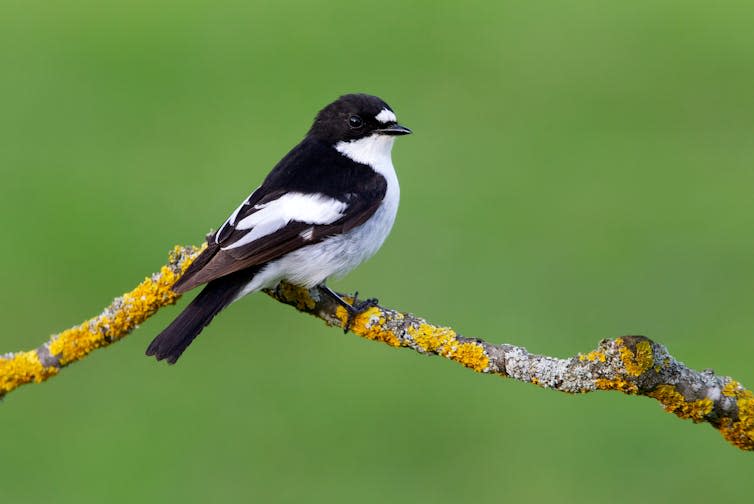With the arrival of spring, endless rituals begin anew: male birds fill the air with song, trying to attract mates and defend their territory from competing males.
But there’s still a lot we don’t understand about how birds learn which sounds to sing. Our latest study provides new insights and suggests that genes may play a more important role than scientists realized.
In almost half of the world’s bird species, young birds learn by imitating the songs of adults. As birds learn songs from each other, mistakes inevitably occur, leading to song variation between populations of the same species, similar to the formation of dialects in human languages.
Female birds usually prefer males that sing songs that are typical of the local population, as it may show that they are well adapted to the nearby environment. In addition, songs are vital for protecting territories. Male birds singing foreign songs often struggle to establish territories against local competitors.
This potential role as a mating and social barrier is why it has long been hypothesized that song variation can drive the creation of new species.
However, scientists do not fully understand what happens to these song differences when birds move between populations. Imagine you are a local bird, and a newcomer comes in singing a foreign song. What’s to stop you from learning this new song? If many local birds learn the songs of the newcomers, it could erase the song differences between populations, and thus the mating barrier.
But birds tend to learn songs only from their own species, even when exposed to the songs of birds of other species. This suggests that birds have genetic predispositions that lead them to learn only “appropriate” songs. So far, these genetic predispositions have only been shown to limit song learning across species.
This raises an interesting possibility. Could these genetic predispositions also constrain song learning within the same species — and could it explain why some song differences are maintained across different populations of the same species?
There are several laboratory-based studies that have explored this idea. But it is rarely tested in the wild, where birds are exposed to songs from different populations and species.
That’s why we wanted to see if these lab results would hold true if we put the test into the field.
In the wild
In the spring seasons of 2017-2019, we transferred the eggs of the plover (a small migratory songbird that breeds widely throughout Europe) from their nests in the Netherlands to a population in Sweden. We carefully transported these eggs to their new home, where they were placed in the Swedish nests and finally raised by the Swedish parents. After the winter, these translocation birds left and made the long journey to their wintering grounds in Africa, along with their counterparts from the Netherlands and Sweden. With the return of spring, they flew back to Sweden, now adults with fully formed songs, ready to find potential mates.

We recorded the songs of these birds and compared them to the songs of their local Swedish environment where they were raised. We also compared them to the songs of their Dutch ancestors. In general, the songs of transposed men were similar to songs of the Swedish population.
This is not surprising, as we know that social learning plays a vital role in the song development of the spotted wagtails. However, we found that transgenic males only learned any Swedish song elements – they learned those elements most similar to their ancestral Dutch population. This meant that their songs did not completely overlap with those of Sweden but were similar to both Swedish and Dutch songs. This suggests that the males are genetically transposed to learn songs from the ancestral Dutch community.
These results show how genetic variation within a species can influence cultural change. We think that as songs continue to diverge between these two populations, the genetic predispositions should also become more distinct. Eventually, birds of the local population may not recognize immigrants from other populations as part of their own species as regional differences often become more pronounced over time. This co-evolution of genes and songs may reduce the likelihood that birds from different populations will successfully mate with each other, encouraging the formation of new species.
This article from The Conversation is republished under a Creative Commons license. Read the original article.


This work has been funded by the Netherlands Organization for Scientific Research (NWO-ALW, ALWOP.171), the European Research Council (ERC, grant 851753) and the Swedish Research Council (VR, grant 2019-03952). The researchers are affiliated with the University of Stockholm, Sweden and the University of Groningen, the Netherlands.